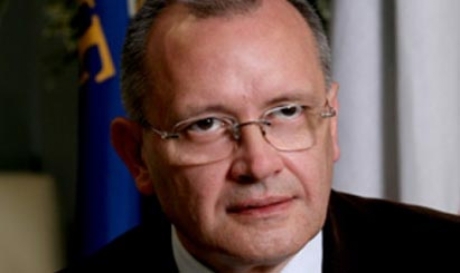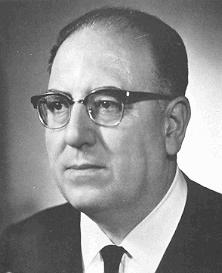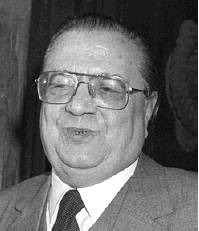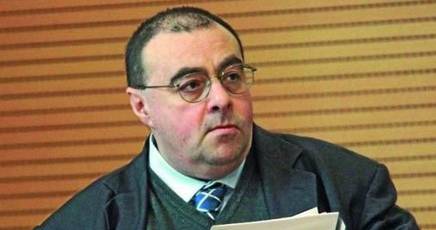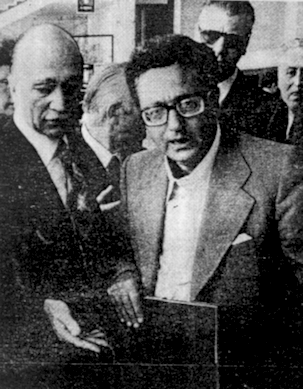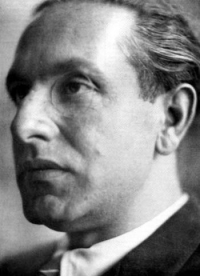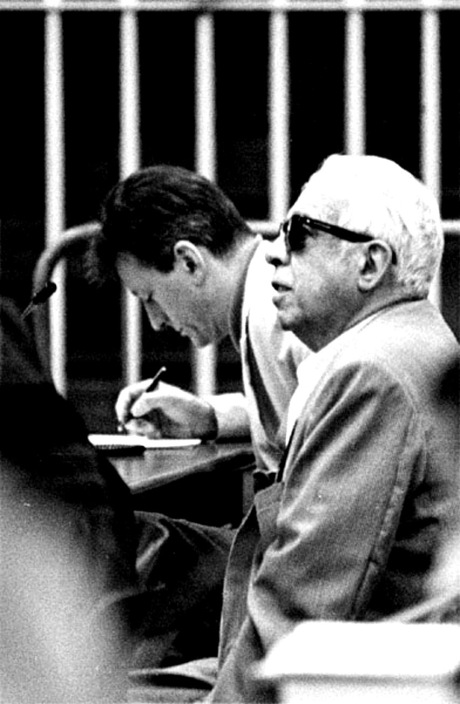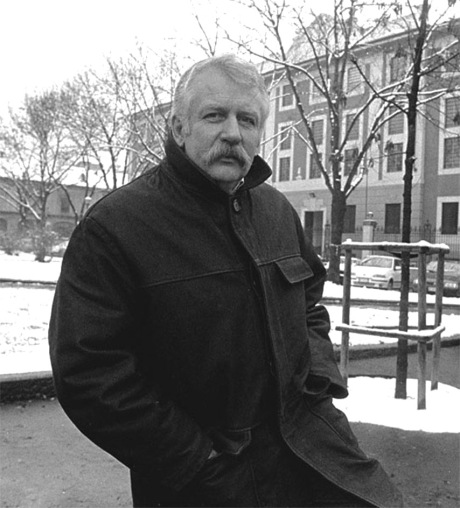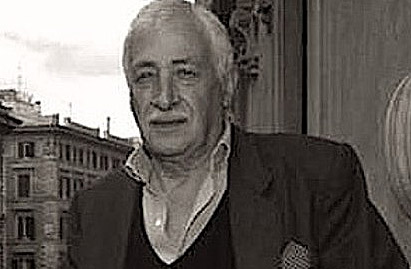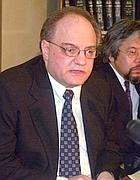Rome, 3 May 2005. In a monotonous drone, in the courthouse in the Piazzale Clodio, the chairman of the second criminal section of the Court of Cassation (Supreme Court), Francesco Morelli, reads out a historic verdict: and turns down the appeals against the verdicts brought in by the Appeal Court in relation to the Piazza Fontana massacre. Acquittals all round, the TV and newspaper headlines read. In fact, the Court of Cassation endorsed the verdicts acquitting Carlo Maria Maggi, Giancarlo Rognoni and Delfo Zorzi, all three of them characters (and, at the time, members of the neo-Nazi Ordine Nuovo organisation) in the never-ending story that began on the afternoon of 12 December 1969. A historic verdict in two senses: because that massacre was carried out thirty six years earlier and because it rings down the curtain on an affair that has (by altering it) written Italy’s history in the blood of its sixteen dead (to which number must be added one more who passed away years later as a result of injuries received) and the almost one hundred injured (the eighty-six officially recorded, plus another ten or so who opted to leave the Banca Nazionale dell’Agricoltura and seek treatment elsewhere).
The “State massacre” has reached the end of the line. From now on no magistrate is going to dare delve any further into that undergrowth. Back in 1989, Milan’s investigating magistrate Guido Salvini took us to task for lifting the lid off that “state mystery”. That year he inherited a very superficial investigation into rightwing subversion from within (eversione). He probed. Questioned. Listened. Ordered inspections of the records of the police, study centres and state administrations. Singling out individuals who up until that point had never been mentioned in investigations into the 12 December 1969 outrage. An unprecedented and yet at the same time tired old vista took shape.
A gang from the Venezia-Mestre Ordine Nuovo, headed by Zorzi, and with Carlo Digilio serving serving as its “quartermaster” (under the supervision of Maggi), can be linked to the activities of another, Padua-based neo-Nazi group, the gang of Franco Freda and Giovanni Ventura. A body blow! Yes, because Freda and Ventura were acquitted back in 1985 and again in 1987 of all charges relating to the Piazza Fontana but given fifteen year terms for two attacks (on 25 April in Milan and the train bombings of 9 August) that amounted to “dummy runs” for the 12 December bombing.
Acquitted in those two verdicts, Freda and Ventura, together with SID informant Guido Giannettini, were nevertheless sentenced on 23 February 19790 by the Court of Assizes in Catanzaro to life imprisonment for the Piazza Fontana outrage. A body blow, then. Pigeons coming home to roost. Investigations by a Treviso magistrate, Giancarlo Stiz, had, way back in the early 70s, identified those truly responsible for the massacre. Making nonsense of the charges framed by two Rome magistrates – Vittorio Occorsio and Ernesto Cudillo – who were “resolutely convinced” that the outrage had been carried out by Pietro Valpreda, an anarchist, and a dancer to boot. The perfect culprit.
At which point, on foot of the Salvini inquiry, they had merely to proceed to trial and, the trail of evidence gathered from confessions obtained could not have helped but lead to conviction of the neo-Nazis and the placing of a legal seal in the halls of justice upon what many people – so very many people – already knew.
In fact, on 30 June 2001, the Milan Court of Assizes, chaired by Luigi Martino, passed life sentences on Maggi, Rognoni and Zorzi, plus a three year term for Stefano Tringali for aiding and abetting Zorzi.
But there is a but. The judges of lower court convicted them in spite of prosecuting attorneys Grazia Pradella and Massimo Meroni. Put simply, the pair of them were ill-prepared for trials of such intricacy: nothing more was to e heard from them and they returned to the limbo from which they had been sourced. It looks as it Pradella and Meroni were chosen in order to hobble the Salvini investigation. In which they were successful.
On 12 March 2004 the Milan Court of Appeal in fact acquitted Maggi, Rognoni and Zorzi. With this curious footnote: it slashed Tringali’s sentence from three years to one year, he having been found guilty of aiding and abetting Zorzi. A detail that only some “hair-splitting” jurist could explain, logic dictating that where there was no offence committed there could not have been any aiding and abetting.
In essence, the judges in Milan held that the pentito Carlo Digilio (whose role as pentito earned him immunity from prosecution for his activities as quartermaster to the Venezia-Meste Ordine Nuovo group) is an unreliable witness in that he repeatedly contradicted himself and made mistakes. True, he made them after having suffered a stroke that left him somewhat impaired (albeit that his medical reports, which were not taken under consideration, insisted that he was fully in control of his mental faculties). The other pentito, Martino Siciliano, on the other hand, is a credible witness but offers “hearsay” evidence unusable in a trial context. It was not enough that Zorzi (a very wealthy clothing industrialist-turned-Japanese citizen whose initial defence counsel was Gaetano Pecorella, a deputy for Forza Italia and subsequently for the PDL, a man who was also defence counsel to Silvio Berlusconi), had repeatedly threatened Siciliano and offered him loads of money to get him to retract. And, to be sure, Siciliano has been a “wobbly” pentito but, in he end, inside the courtroom, he has stood by all of his accusations. Not enough. The acquittal of the trio hammered home the old formula about insufficiency of the evidence, a formula that has now been formally done away with.
The Milan judges then tossed in a real “gem” by way of a grounding for their acquittal decision. Reconstructing the sequence of attacks in 1969, they acknowledged that Giovanni Ventura and Franco Freda were responsible for the Piazza Fontana and not just for the bombings in Milan on 25 April and the 9 August 1969 train bombings: “The acquittal of Freda and Ventura is a mistake, the result of a state of familiarity with the facts superseded by the matters adduced in this trial.”
In short, the ultimate hoax was mounted in Milan. The two culprits singled out by Stiz (see Chapter XVI: On the Trail of the Fascists) are supposedly the people responsible for the massacre, but, as to their relations with the Ordine Nuovo members from Venezia-Mestre and Milan, there is insufficient proof. Also closing off any involvement by Stefano Delle Chiaie, the then leader of Avanguardia Nazionale in Rome, which is to say, of the group that provided the logistical back-up (and not just logistical back-up) for the bombings on 12 December 1969, of the Cenotaph (four dead) and the Banca Nazionale el Lavoro in the Via Veneto (fourteen dead). After years as a fugitive from justice, Delle Chiaie returned to Italy and was finally acquitted in 1991.
Then again (many a long year ago) the upper reaches of the Italian state … those Christian Democrats and Social Democrats who effectively acted in cahoots with the Italian and US secret services (and with rightwing extremist henchmen) .., in order to uphold the status quo in Italy, bombs and massacres or no bombs and massacres, have finally been cleared.
What both the right and (albeit for different reasons) the left want is for us all to forget or to be left bewildered. Through a strategy mounted on the basis of reports from the Massacres Commission released towards the end of 2000. First came the report from the DS (Democratic Left) parliamentary group. A reading (or re-reading) of the years of the bombings, outrages and coup attempts. The DS has come up with what seems at first glance to be a reconstruction sufficiently under-pinned by facts and verdicts and scrutiny. The upshot is that the spotlight focuses on the role of neo-Nazi and neo-fascist organisations, on the protection they enjoyed from the machinery of state, the courts, the secret services and on the prominent role played by the CIA and NATO secret services. The novelty in all this was the spotless image that the Italian Communist Party (PCI) donned in the 60s and 70s: the party of Luigi Longo and Enrico Berlinguer is depicted as the great stalwart, standing by democracy in Italy. In short, the highest self-praise.
Then came the retort from the parliamentarians Alfredo Mantica and Vincenzo Fragalà back in the days of Alleanza Nazionale. In two brief but fantastic reports they turned the spotlight back on to the anarchists. “In the investigation into the Piazza Fontana there was more and worse to come: any clue that might have pointed to the anarchist line of inquiry was simply ignored.” According to Mantica and Fragalà, in fact, the real culprit behind the 12 December 1969 massacre in Milan was Pietro Valpreda. And Giuseppe Pinelli, entangled in the matter (and maybe even a police informer) supposedly took his own life after the screws were put on him. Furthermore, in relation to bombs, the Milan anarchists allegedly had a history which, they argue, reaches right back into the early 1960s. It is therefore only reasonable that those responsible for the strategy of tension should be sought in those quarters. All under the aegis of the Soviet secret service: the KGB.
A cack-handed gambit, not even seriously documented and replete with contradictory inferences, but which has a specific political purpose: to show that the history of those years is open to diametrically opposite interpretations. And if none of them is wrong, then none of them is right. Better therefore to let it go and resort to the all too Italian practice of starting with a clean slate.
The aim was clear: to wind up the Massacres Commission following the 2001 elections (in which the centre-right were the victors). Thereby conceding that the 1960s and 1970s had been dire. But now we need to leave them behind and send everybody home again, all blameless.
That past is a hot potato for both political camps. The right is involved in it up to its neck, so much so that it wiped its hands of an electoral pact with Pino Rauti and his MSI-Fiamma tricolore. He would have proved an unduly uneasy ally on account of his having been heavily involved in the era of outrages: Ordine Nuovo, of which Rauti was the leader back then, was in many instances the sword arm of that strategy. To say nothing of Giorgio Almirante’s Movimento Sociale and their dalliances with black terrorism. And the Gianfranco Fini who was Almirante’s ultra-loyal young admirer back then, would have us forget his past. In 2005, in fact, the Alleanza Nazionale rebranded itself as the “democratic right”. So extremist posturing has to be left behind. Hence the centre right’s need to lay to rest an uncomfortable and decidedly unpalatable past.
In a way it is a similar story with the centre-left, especially its main component part, the DS (Democratic Left, these days known as the PD, Democratic Party). Its fore-runner, the PCI, used (to adopt a more schematic viewpoint) the facts about the state massacre (which it knew) to boost its own own access to power. In practice, it put a price on its silence. How? By putting the squeeze on the Christian Democrats, a huge political melting-pot wherein pro-coup elements lived cheek by jowl with “democratically more presentable” personnel. The famous tactic of “I am in the know but I’ll say nothing if we can come to some arrangement”. A tactic that also prospered in part because – in the PSDI {Italian Social Democratic Party) – the Christian Democrats had an ally committed to drawing a veil over the role of the US secret services. The “American party” operating in the Italy of the 1960s and 1970s (it being no accident that it came into being in 1947 with substantial funding from the CIA via the AFL-CIO union conduit).
Again in 2000, there were other magistrates on the same wave-length. Libero Mancuso, a public prosecutor in Bologna, was something of a prophet: in fact he argued that dwelling on the Piazza Fontana amounted to indulgence in “judicial archaeology” in that nothing would ever come of it.
It was no coincidence that Judge Salvini was forced to defend himself against charges levelled by fellow magistrates, especially by his Venetian colleague Felice Casson, with help from the reporter Giorgio Cecchetti from La Nuova Venezia and La Repubblica, the source of a number of scoops relating to news that was still top secret. In the end, Salvini was cleared both by the Higher Bench Council and by the Court of Cassation. He had been charged with “contextual compatibility” (i.e. the charge was that he ought never to have worked for the court in Milan and with violating the obligations of the bench (having used SISMI agents to unearth information about Martino Siciliano). The entire affair throwing up a far from irrelevant issue: anybody who looks into the Piazza Fontana and raises questions about the “official version” is an irritant.
In 2000, in September to be exact, senator-for-life Paolo Emilio Taviani made significant statements following those he made in 1997 to the Massacres Commission. In May 1974, he had been Interior minister and it was Taviani, no less, who dismantled Federico Umberto D’Amato’s Confidential Affairs Bureau (Ufficio Affari Riservati). This was a significant move, for D’Amato had been one of the leading elements directing inquiries away from rightwing subversives and the 12 December massacre (not only that, but he was indeed the puppet-master of certain schemes). The senator-for-life told members of the carabinieri ROS that he had learned in 1974 that the bomb planted in Milan had not been meant to claim any lives and that a SID agent, Rome lawyer Mateo Fusco di Ravello, had been on the brink of leaving Fiumicino airport for Milan with the mission of preventing the attacks. He was about to board his plane when he heard that the bomb had already gone off. Fusco’s daughter Anna (Fusco died in 1985) confirms that her father had long been working for the SIFAR and then for the SID and that he had, on several occasions, spoken to his daughter about the abortive attempt to prevent the Piazza Fontana massacre. Which is yet another morsel showing how the most mportant state agencies were au fait with the planning of the attacks and had tried only at the eleventh hour to soften their impact. In that regard Fusco, whose daughter has stated that he was very close to Rauti, was one high level contact between the military and the secret services and Ordine Nuovo. But Taviani did not stop there. He said that among the institutional officials actively shifting the blame towards the left was an officer in Padua, Manlio Del Gaudio. And who might this gentleman be? Why, Lieutenant-Colonel Del Gaudio, the then commander of the Padua carabinieri, allegedly the serviceman to whom the SID’s General Gianadelio Maletti entrusted the task in 1975 of “shutting off the Turkish tap”, i.e. source Gianni Casalini, an Ordine Nuovo member and SID informant who intended to “unburden his conscience” and lift the lid on everything he knew about the group’s responsibilities in relation to the train bombings of 8 and 9 August 1969. But the Milian Assize Court refused to listen to Taviani in April 2001 (Taviani then died on 17 June) or Fusco di Ravello. How come? Their evidence had surfaced at a point when the proceedings were close to a conclusion: and anyway, it was not regarded as “absolutely necessary”. Just one of many things that highlight the state provenance of the many outrages that punctuated the 60s and 70s. And many another could be mentioned. All pointing in the same direction.
http://espresso.repubblica.it/multimedia/24226612/1/2
Nowadays the climate is better suited to letting an issue as bothersome as the Piazza Fontana fade into oblivion. Pietro Valpreda died on 7 July 2002. So many of the other protagonists are also dead, just as so many of their confederates have also left the stage. And the verdict handed down by the Court of Cassation has set the seal on a de facto situation: no one is to be held to blame for that slaughter.
So how did this tangled tale, starting with anarchists only to arrive at Nazifascists, Italian and American secret services, and now closed up with “acquittals all round” all begin? Plainly, we need to turn back to that notorious 12 December 1969.
NOTE: List of fascists who travelled to Greece as guests of the Greek Junta’s secret services

